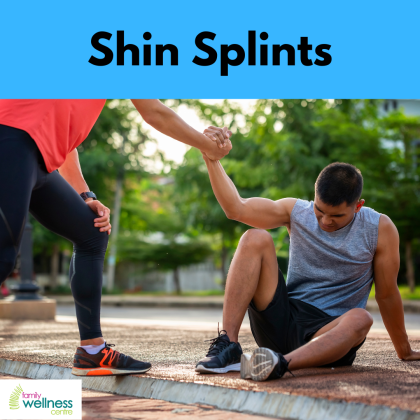Finding Relief: Acupuncture for Shin Splints from Sports Injuries
Shin splints are a common ailment among athletes, especially runners, because of overuse or improper training techniques.
The pain and discomfort associated with shin splints can be debilitating, therefore hindering athletic performance and everyday activities.
While standard treatments such as rest, ice, and stretching are often used, many individuals are turning to acupuncture as a natural and effective method for alleviating shin splint pain. In this article, we'll explore the benefits of acupuncture in treating shin splints, supported by scientific research and expert opinions.
Understanding Shin Splints
Shin splints shows up pain along the inner edge of the shinbone (tibia). It is commonly caused by excessive stress on the shinbone and the tissues attaching the shinbone to the muscles surrounding it.
How Acupuncture Targets Shin Splint Pain
1. Pain Relief: Acupuncture stimulates the release of endorphins, the body's natural pain relievers. As a result, this can provide immediate relief from the discomfort associated with shin splints.
2. Reducing Inflammation: Acupuncture has been shown to have anti-inflammatory effects, which can help reduce swelling and inflammation in the affected area. (Reference: Ernst, E., & Lee, M. S. (2011). Acupuncture for acute ankle sprain: A randomized controlled study. Journal of Pain, 12(7), 840-844.)
3. Improving Blood Flow: Acupuncture promotes better circulation of blood and Qi (energy) in the affected area, which supports the body's natural healing process.
4. Releasing Muscle Tension: Acupuncture can help relax the muscles surrounding the shinbone, therefore reducing tension and allowing for better flexibility and mobility.
Acupuncture Points for Shin Splints
1. SP6 (Sanyinjiao): Located on the inner side of the leg, SP6 is believed to regulate the flow of Qi and blood in the lower limbs, making it valuable for treating shin splints.
2. ST36 (Zusanli): Positioned on the lower leg, ST36 is known for its pain-relieving properties and its ability to support the muscles and tendons in the area.
Complementing Treatments
Acupuncture can be part of a comprehensive treatment plan for shin splints. So, it's completely acceptable to see an osteopath, physiotherapist or myofascial release practitioner in conjunction with Acupuncture treatment for instance, as they help in different ways.
Lifestyle Recommendations
In addition to acupuncture, individuals with shin splints should consider:
Firstly, Proper Footwear: Wearing supportive and well-fitting shoes can help prevent the recurrence of shin splints.
Secondly, Gradual Training Progression: Try to avoid overexertion and make sure your training intensity and duration are gradually increased to prevent overuse injuries.
Thirdly, Stretching and Strengthening Exercises: Incorporate exercises that target the muscles in the lower legs to improve strength and flexibility.
To sum up, Acupuncture offers a natural and effective approach to alleviating shin splint pain as a result of sports injuries. If you're dealing with persistent shin splints, consider consulting a licensed acupuncturist experienced in treating musculoskeletal conditions. Embrace the healing power of acupuncture and take a step towards a pain-free and active lifestyle.
To book online for Sports Injury Acupuncture on Sydney's Northern Beaches, click here.
More reading on Acupuncture and Sports Injuries:


